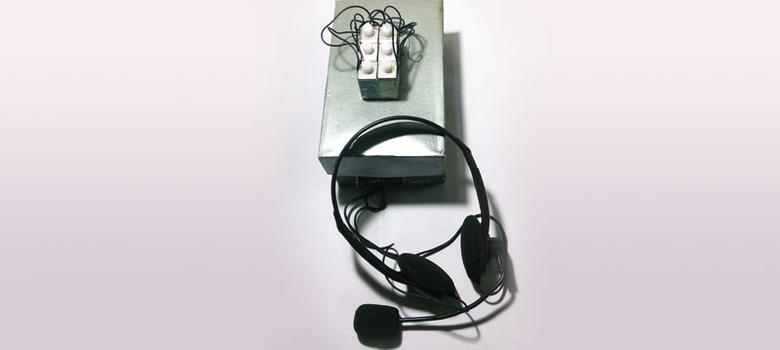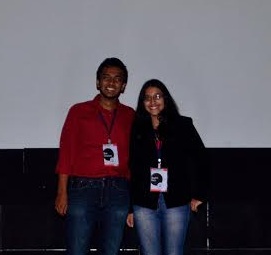Started out of a bedroom in December 2010, Ola was the brainchild of millennial founders Bhavish Aggarwal and Ankit Bhati. Pranay Jivrajka joined the founding team seven months later, and in July 2011 the team was five people strong – they had also hired a couple of call-centre operators to manage calls.
What was the vision then? To serve Mumbaikars and provide them with a superior transportation service. The vision remains strong even now, only the scope has changed to serve the mobility needs of a billion Indians.
Back in 2010, the founding team identified a clear gap in value: thousands of cabs were lying idle as unused inventory across Mumbai. Operators charged a bloated amount for each trip to make up for idle time and customers ended up paying through their nose, irrespective of whether they travelled 10 or 40 kilometres. Besides, service was poor and delays were commonplace.
The team wanted to bridge this gap, and initially started off with bookings over the phone. It wasn’t easy though. Bhavish’s parents were unhappy that he had put off a promising career in research and was starting a “taxi rental company”. But the drive (pun intended) to create something of value that could redefine an entire industry to benefit a large number of customers was strong.
The founding team reached its first milestone early in 2011 when they closed ten bookings in a single day (to put things in perspective – Ola booked about 700,000 rides daily in October 2015). They tested out a point-to-point service model with a unique device tracking each cab. This was still an offline model though.
Later, in 2011, Ola migrated to an online system wherein the team resorted to real-time tracking and this pilot was frozen in January 2012. Multiple events followed in quick succession: Ola expanded to Bangalore and Delhi in April 2012, launching its flagship cab service in those cities in a short time span of twenty-one days. The consumer app which millions of Indians now use on their smartphones went mainstream. The pivot to an on-demand model happened quickly thereafter (which is why you can now book an Ola in a matter of minutes through your app).
The pace of growth at Ola has been intense: as of this writing, Ola had over 300,000 registered vehicles on its platform. Ola acquired competitor TaxiForSure in March 2015. The advantage of building a networked digital platform is that it is conducive to experimentation, and can be utilised in more ways than one.
A steady stream of innovative launches have both strengthened and leveraged the aggregator’s massive web of networked vehicles. These include Ola Auto (booking an autorickshaw through the app), Ola Kaali-Peeli in Mumbai (hailing the famous black-and-yellow just got that much easier), Ola yellow cabs in Kolkata, Ola Money (the mobile wallet that you can use to book not just cabs but also other services), Ola Share (a social ride-sharing feature), Ola Prime (Wi-Fi-enabled taxis) and Ola e-rickshaws.
Autonomy and accountability
For someone who manages a large team of millennials, Pranay Jivrajka is extremely grounded. During our telephonic tête-à-tête, he listens intently, is patient and takes pause occasionally to think through responses. He is quite proud of the fact that his team has had the lowest attrition over the last three years (revealed after much prodding). The secret sauce to building a coherent millennial team that sticks together over time? Autonomy.
“How can I come up with a solution to a problem that is solved better by someone who is interacting with a stakeholder, on the ground? My job is to give my team the freedom to both think clearly and execute objectively. Teething issues are best resolved by those closest to the action,” explains Pranay.
This does not mean that Pranay does not hold his team accountable for results. “I spend time with my team members – more with some than with others, until we are both confident of each other’s abilities. Once trust is established, I don’t interfere unless my support is needed for execution.” This kind of “autonomy support” – where Pranay is available when required, and not breathing down everyone’s neck all the time, produces the desired results (rapid growth and a bundle of cool innovations since Ola’s inception are all proof of this) and leads to greater satisfaction among team members as well.
It is easy to confuse autonomy with independence – autonomy doesn’t mean you are holed up in a cabin, working by yourself all day. It means being in control of the choices that you believe may be essential to reach your stated goals. You could be autonomous while at the same time continuously collaborating with others to produce value for your stakeholders.
To drive the point home, Ola does not clock time for its employees. An outcome-focused work environment means that millennial employees are endowed with dollops of ownership, share in the decision-making process and, like Pranay Jivrajka did in IIT, work towards a stated goal that is much larger than them.
A challenge big enough to pursue
When Ola designs its services, it caters to meet the high expectations of the discerning Indian customer, while at the same time meandering through an extremely complex market environment, routinely engaging with stakeholders like driver unions and multiple agencies. Yet, Ola views all of them as essential stakeholders, each with a different set of priorities. With a razor-sharp focus on the outcome (usually some version of digitally enabled, disruptive customer service), the team at Ola operates keeping in mind the interests of all involved.
In Pranay’s words, “Problem identification is key. Do we have a challenge that’s big enough for us to pursue? Once we have this identified, we create a roadmap with aggressive timelines, chalk out responsibilities, and go about executing it with fervour.”
For example, Ola scaled up its cab services from twenty to over a hundred cities within a matter of months. This required depth of understanding of the infrastructure capabilities of each city. During the time of roll-out, some cities supported only 2G connectivity, so the tech team went back and designed a version of the app that could work seamlessly even in smaller towns with minimal access to 3G and Wi-Fi networks.
This kind of deliberate push to look for meaningful problems requires promoting an inquiring mindset, one that is not averse to experimentation to find the right solutions. Once a big enough challenge has been identified, team members immerse themselves completely in the task, and relentlessly work towards achieving the stated outcome.
Perseverance and passion to stick through ups and downs require a certain level of grit and determination. Solutions may take some time to materialise, but the journey itself can be rewarding. One reason for this is that because Ola is a digital service, the feedback loop for engineers and developers is almost immediate, and making course corrections along the way becomes that much easier. An engineer could figure out the impact of a new app feature and redesign it in a matter of hours or days, not months.
Although it has grown several-fold since its formative years, Ola has retained its sense of agility and nimbleness by embracing the yin of high autonomy and balancing it with the yang of accountability. An outcome-focused ethos that places top priority on achieving results is the driving force that powers the Ola juggernaut.







